Reviews
Richard Stanley
UK, 1990
Credits
Review by Rumsey Taylor
Posted on 24 October 2009
Source Severin Films DVD
Related articles
Features
‘White Spaces on the Map’: An Interview with Richard Stanley
Categories 31 Days of Horror VI
Hardware is posited in the sort of nonspecific, impoverished future that’s become a mainstay in dystopian sci-fi movies. Examples of technological advancement are ubiquitous, only rendered within the constraints of an imagination contemporaneous with the film’s 1990 release: TV screens that broadcast fuzzy analogue signals, screen interfaces strewn in strings of command-line text. Many of these things don’t work flawlessly, and the ones that do are banged up and rusted. It’s a future characterized by progress in as much as it is by neglect and poverty.
This ensures an atmosphere of technological unreliability; imagine an entire world in which all electronic devices are as faulty as an old alarm clock. Now, imagine if your alarm clock one day, as a symptom of the Singularity, magnetizes and cleaves itself to proximate objects, sprouting appendages not unlike a mammal’s, but with sharp objects in lieu of fingers, a saw blade for an arm, and two LED eyes that stare unremittingly toward you.
I refer to the robotic menace that iconically graces the DVD cover, but Hardware isn’t as distinguished by this monster as one would think. This creature is more appropriately described as a component of a larger, more oppressive atmosphere of post-apocalyptic hostility. When one of the main characters, a resourceful yet nonetheless victimized beautiful woman, encounters the aforesaid robot, she cannot escape because her apartment’s sophisticated security system (which features sliding doors that resemble steel jaws) malfunctions, trapping her inside.
For its first hour Hardware capably renders its brand of future impoverishment. It opens in an unspecified desert, with an unnamed drifter who comes upon a collection of robot parts—artifacts of a nuclear war. He collects a single component, the head, because it looks to be of some value, and totes it to an unnamed city - its horizon strewn in garish industrial buildings - in which he aims to pawn it. This robot part - the top half of a skull which concludes in tendrils of disconnected cables - is ambiguous in its function, and it doesn’t look broken in as much as it does dead, a part of something that in its operative state must have looked human, albeit much less destructible.
It inevitably becomes something without any apparent vulnerability, and it’s at this point, halfway through, that Hardware’s technical limitations start to constrict the otherwise accomplished craftsmanship. (This is nothing to bemoan, I should say, because Hardware belongs firmly to the sort of rarefied effects-laden genre filmmaking that I, for one, consider totally awesome.) The silent, exactingly hostile robot (it is roughly ten feet tall when it’s not poised in a hunch, readied to pounce upon some defenseless human) is a combination of electronic widgets, sculpture, and puppetry: one of its hands (or perhaps some independent appendage) culminates in a buzz saw; the other has syringes for fingers, filled with an indeterminate but probably lethal substance. When this robot is featured in a scene, its makeshift construction determines the camera staging and cinematography, in effect contriving the direction of the film. It’s composited in an assembly of shots from the waist up or with one of its dangerous appendages cropped into a claustrophobic composition. After many, if not all, of the robot’s various features have been earmarked, the film is more or less over.1
Hardware is the first of Richard Stanley’s pair of feature films in an unjustly abbreviated career that heretofore concludes with 1993’s Dust Devil. There are marked similarities between both films: accomplished art direction, comprehensive scenarios within otherwise constrictive budgets, prodigious prosthetic effects. They’re also both a bit inaccessible, strewn in bits of unclear dialogue and inadequate exposition. Stanley’s absence from feature filmmaking (which numbers close to twenty years as of this writing) encourages his work’s reevaluation, and its flaws are capably inhibited by his unique vision.
Hardware was advertised as a “Terminator for the ’90s,” and this is indirectly the most astute endorsement that can be made for the film as it addresses its particular vintage. James Cameron’s sequel to the original Terminator was released the year following Hardware, and famously ushered in an era of effects filmmaking that relies more and more upon CGI than in tooth-and-nail prosthetics and puppetry. Hardware is in practice more similar to the original Terminator than its sequel, displaying an abundance of craft, and ably recalling what has become a bygone era in cinema.
- This robot was conceived by Chris Cunningham, whose work in robotic puppetry is perhaps epitomized in Bjork’s video for “All Is Full Of Love”: http://www.youtube.com/watch?v=EjAoBKagWQA ↩
More 31 Days of Horror VI
-

From Beyond
1986 -

The Haunting
1963 -
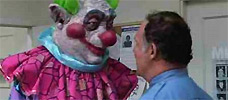
Killer Klowns from Outer Space
1988 -

Shock ‘Em Dead
1991 -

Critters
1986 -

Critters 2
1988 -

The Fall of the House of Usher
1928 -
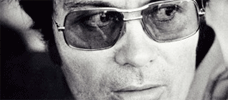
Jonestown: The Life and Death of Peoples Temple
2006 -

In the Mouth of Madness
1994 -

Winterbeast
1991 -

Black Roses
1988 -

Needful Things
1993 -
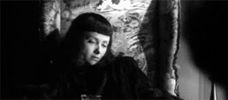
The Seventh Victim
1943 -

A Page of Madness
1926 -
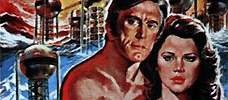
Holocaust 2000
1977 -
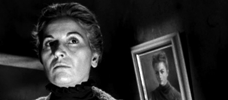
The Man and the Monster
1958 -
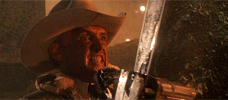
The Texas Chainsaw Massacre 2
1986 -

Trick or Treat
1986 -

Single White Female
1992 -

Trouble Every Day
2001 -
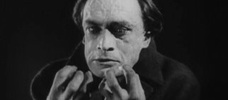
The Hands of Orlac
1924 -

The Devil’s Advocate
1997 -
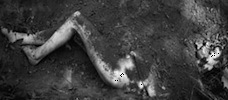
Nocturne
1998 -

Hardware
1990 -

Hard Rock Zombies
1985 -

The Slumber Party Massacre
1982 -

Saw VI
2009 -
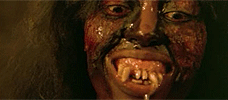
Zombi 4: After Death
1988 -
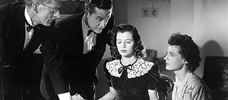
The Uninvited
1944 -

Hausu
1977
We don’t do comments anymore, but you may contact us here or find us on Twitter or Facebook.



